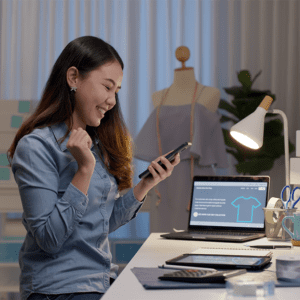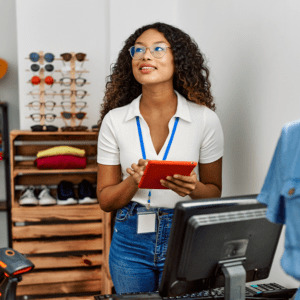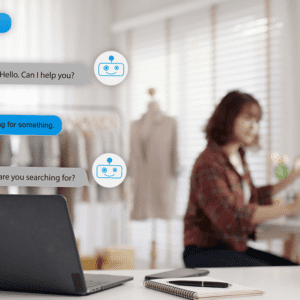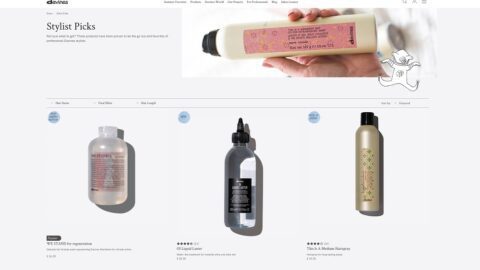Gen Z and their younger counterparts in Gen Alpha are often referred to as “digital natives.” But what exactly does that mean? And more importantly, how does this “native” status impact the methods brands use to engage these current and future consumers? A panel at the June 2023 Retail Innovation Conference & Expo provided answers and insights in the session titled Gen Z and Gen Alpha: Creating Impactful Brands for the Next Wave of Consumers.
Key points included:
- These generations grew up not just as digital natives but with Amazon Prime, so they expect the near-instant gratification of two-day shipping almost as a default;
- They are not just mobile-first but increasingly mobile-only, making it necessary for retailers to provide a complete shopper journey — including post-purchase “touches” and returns — that is optimized for smaller screens; and
- Gen Z cares about sustainability and how their actions impact the environment, which is fueling the surge in resale and removing the stigma from secondhand and “knockoff” brands.
Retailers and brands have no time to waste if they want to capture their share of this generation’s spend. Gen Z and the next-oldest generation, Millennials, “represent 56% of the world’s population that is 13 or older, and more than $5 trillion in annual spending power,” said Julia Berk, Head of Consumer Insights at Snapchat, who moderated the session. “The oldest members of Gen Alpha are [themselves] turning 13, so they are beginning to influence household purchases.”
What Defines a ‘Digital Native’?
For Kit Garton, VP of Product at DTC men’s swimwear and apparel brand Chubbies, being a “digital native” entails more than just growing up with the internet and your favorite celebrities all in the palm of your hands. “It also means instant gratification of access, and that expectation translates to any integrated online experience,” said Garton. “Look at fast food delivery: that optimizes both the online and the physical experience to feed that instant gratification/dopamine hit.”
Advertisement
And even though their smartphones are seldom out of reach, members of Gen Z aren’t using it to make calls, at least not for customer service issues. “We got rid of a voice option on our customer support team; we don’t publish a phone number, but our customer satisfaction scores are still high,” said Garton. “We use asynchronous communications like email and text so that customers aren’t waiting on hold for five minutes; they can go about their day while waiting for a text back.”
The youth-oriented brand also makes an effort to “hire Gen Z, which may seem like a given,” said Garton, noting that Chubbies has a college internship program and recruits employees on college campuses. “This allows us to keep bringing in those fresh perspectives, and [these employees] have digital native fluency. It’s important to listen to them when they tell you things. We might use the copy they recommend for an ad, or OK [what might seem to be an] ‘out there’ print design for a swim trunk, and our customer base sees that.”
Not Just Digital-First but Mobile-First
Gen Z consumers (and probably a fair number of older shoppers) are looking for more streamlined, integrated mobile experiences, particularly in the area of checkout. “While 80% of our online traffic is mobile, it represents a far smaller percentage of conversions due to the friction of getting someone to complete the purchase on their phone,” said Garton. “Digital wallets like Apple Pay or PayPal are critical to getting that conversion in the moment, where they see a TikTok video and make that purchase.”
Retailers also need to apply this mobile-first lens to everything that happens after the purchase is made, including package tracking and product returns. “You need to make sure the experience is really tailored for that [mobile] format,” said David Morin, VP of Customer Strategy at Narvar. Narvar’s youth-oriented clients include retailers such as Nike, Forever 21 and American Eagle Outfitters, which he said clock as much as 92% to 95% of their online traffic on mobile.
For these retailers, SMS text is important for communication and push notifications, but it’s just one of many customer service technologies. “We’re hyper focused on new tools and services that drive ease and convenience,” said Morin. “That can mean automated chatbots for WISMO [Where is my order?] interactions and automated return experiences. And for those return experiences, for this generation, retailers could use QR code-based returns, ‘boxless’ returns or not even returning the product [to the retailer] for sustainability issues.”
Sustainability is Scrubbing the Stigma of Secondhand
While Gen Z collectively commands billions in spending power, individual members of the generation are likely dealing with the CARLY phenomenon: Can’t Afford Real Life Yet, according to Tanya Brinich, Senior Director of RaaS Client Success at ThredUp. Fortunately for her company, “value is a great entry point for loyalty as it relates to resale, and we see resale as a customer loyalty play.”
“There’s been a rebranding of ‘knockoff’ to ‘dupe,’” said Garton. “When I was growing up, knockoffs were an embarrassing thing because they meant you couldn’t afford the name-brand item. But now dupe is a savvy value play, a power move. Brands are responding: Lululemon did a campaign [asking customers to] bring in their dupe leggings. Gen Z knows what their economic situation is, and they want to save their money for items or experiences that really matter to them, so they look for dupes and value where they can.”
“It’s become a status symbol to thrift shop and find a highly coveted brand,” Brinich added. “That attracts the consumer that couldn’t afford the Kate Spade handbag or J.Crew jacket, and then later they can trade up for the brand name.” Sustainability comes into the equation because these consumers are expecting not only that their purchase will last but that it will maintain its potential resale value, she noted.
This trend is poised to become even stronger, particularly as Gen Alpha exerts greater influence on household purchases and these consumers start to buy things for themselves. “We expect this consumer base to fuel the rise of secondhand online, as they push their parents to think more about their purchases or consider other channels,” said Brinich. “There are a lot of opportunities with Gen Alpha, and we need to have faith in their making the right decisions for our planet.”
















